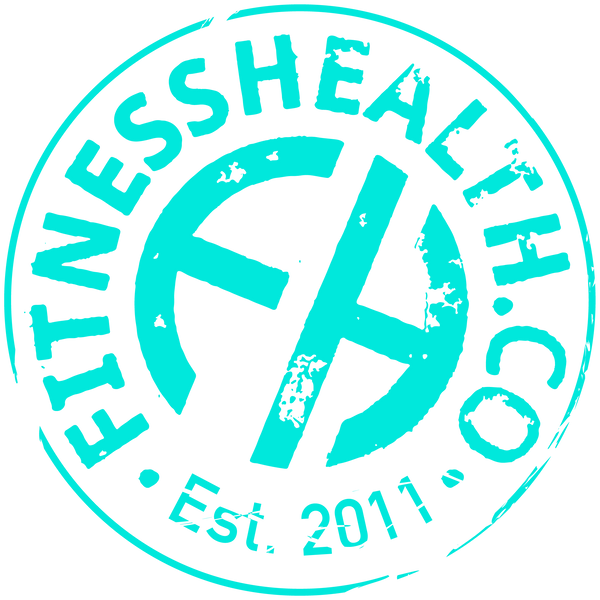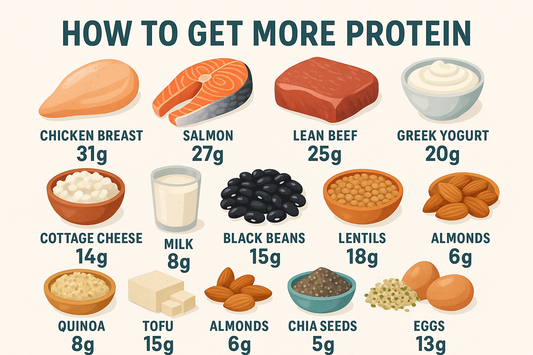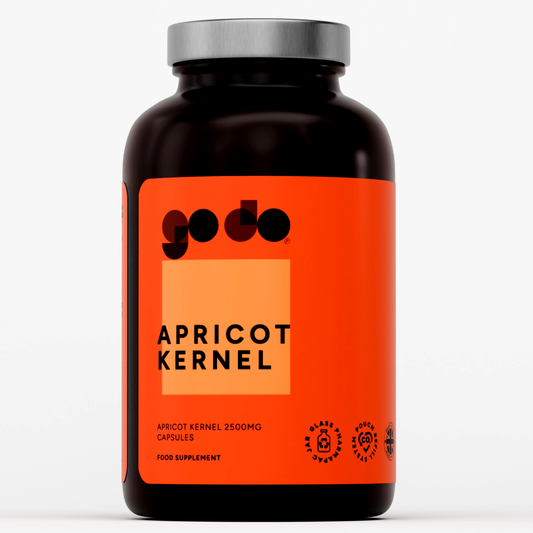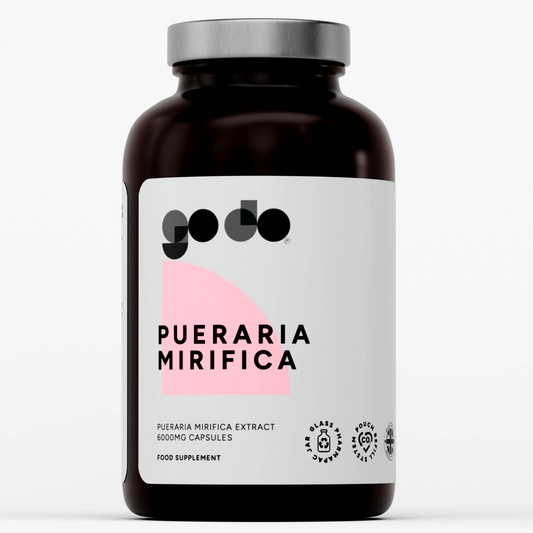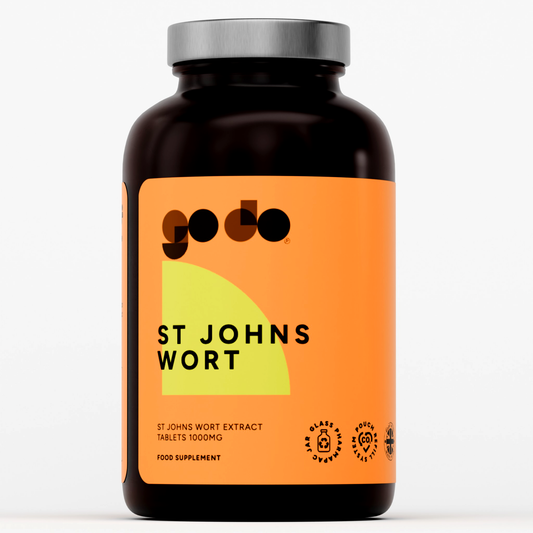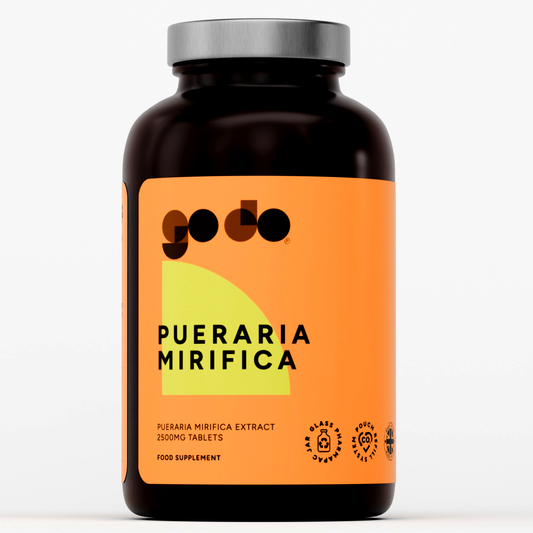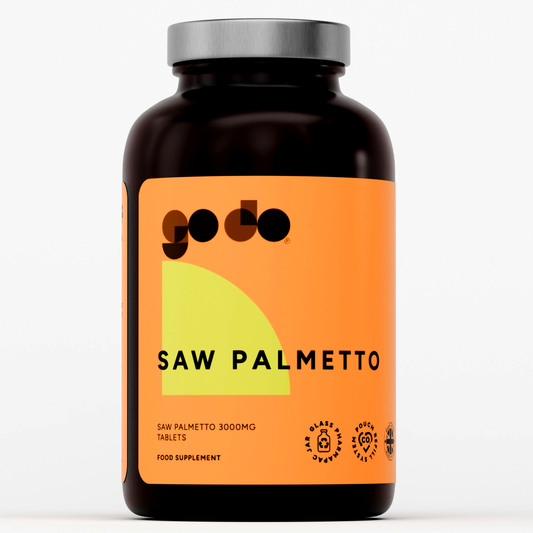Effective Strategies for How to Lose Belly Fat and Gain Muscle (Female-Focused Guide)
Women face unique challenges when pursuing body recomposition—the simultaneous goal of losing fat while building muscle. Hormonal differences, lower baseline muscle mass, societal pressures about body image, and specific physiological responses to training and nutrition all require a tailored approach. Achieving and maintaining a healthy weight through proper nutrition and calorie intake is essential for supporting optimal body composition and overall health. While the fundamental principles of fat loss and muscle gain apply to everyone, optimizing these strategies for female physiology produces better, more sustainable results.
Understanding Female Body Composition
Women naturally carry higher body fat percentages than men due to biological and reproductive functions, which can make it more challenging to facilitate fat loss :
Essential fat for women ranges from 10-13%, compared to 2-5% for men. This essential fat supports reproductive function, hormone production, and overall health. Attempting to go below essential fat levels can disrupt menstrual cycles, compromise bone density, impair immune function, and create serious health consequences.

Healthy body fat ranges for women:
- Athletes: 14-20%
- Fitness enthusiasts: 21-24%
- Average/acceptable: 25-31%
- Overweight: 32-38%
- Obese: 39%+
While body mass index (BMI) is often used as a screening tool to assess overall health by relating weight and height, it does not distinguish between fat and muscle mass. Therefore, a balanced diet and body composition analysis provides a more accurate and informative reflection of health than BMI alone.
Women naturally store more fat in the hips, thighs, and buttocks (gynoid fat distribution) due to estrogen’s influence, while men tend toward abdominal storage (android distribution). However, women still accumulate visceral fat (around organs) and subcutaneous abdominal fat, particularly targeting specific muscle groups during and after menopause when estrogen levels decline.
Muscle-building capacity differs between sexes. Women have approximately 15-20% less muscle mass than men on average and produce significantly less testosterone—the primary anabolic hormone. This doesn’t mean women can’t build impressive muscle; it means the process occurs more gradually and requires dedicated effort. Fat free mass, which includes muscle, is a key component of healthy body composition and is important for metabolic health.
However, women respond to resistance training with similar relative strength gains as men. A woman who trains consistently can expect to increase her strength by similar percentages as a male counterpart, even though absolute strength levels differ.
As women age, muscle mass decreases, which can contribute to changes in body composition and increased fat accumulation if not addressed through resistance training.
The Belly Fat Reality for Women
Visceral fat (fat surrounding organs) poses greater health risks than subcutaneous fat (fat under the skin). Women tend to accumulate less visceral fat than men during reproductive years due to estrogen’s protective effects, but this advantage diminishes during menopause. Women with a higher waist circumference are at higher risk for obesity-related health conditions.
Subcutaneous abdominal fat is stubborn for several reasons. Excess belly fat not only affects appearance but also increases the risk of metabolic and cardiovascular diseases, which makes choosing the right workout important:
Alpha-2 receptors are more prevalent in fat cells of stubborn areas (lower abdomen, hips, thighs in women). These receptors inhibit fat breakdown, making these areas resist fat loss even during overall body fat reduction.
Blood flow to stubborn fat areas is lower, which reduces the delivery of hormones and compounds that facilitate fat mobilization and burning, making it more difficult to resist sugary foods .
Estrogen influences fat storage patterns. While it generally promotes lower body fat storage (hips and thighs), fluctuations throughout the menstrual cycle affect water retention, hunger, and fat distribution.
Spot reduction is a myth. You cannot selectively burn fat from your abdomen through targeted exercises. Fat loss occurs systemically based on genetics, hormones, and overall body composition. However, building abdominal muscle through targeted exercises improves core strength and can enhance appearance once body fat decreases.
The reality: losing belly fat requires overall body fat reduction through caloric deficit, while abdominal exercises build the muscle that will eventually show through. A combination of diet, exercise, and lifestyle changes is necessary to effectively reduce belly fat.
Hormonal Considerations for Women
Understanding how hormones affect body composition helps women optimize training and nutrition for effective weight loss . Stress hormone levels, such as cortisol, can influence fat storage patterns, particularly in the abdominal region.
The Menstrual Cycle and Training
The menstrual cycle creates hormonal fluctuations that affect training response, recovery, and fat loss:
Follicular phase (days 1-14, approximately):
- Higher estrogen levels
- Better insulin sensitivity
- Enhanced recovery capacity
- Greater strength and power output potential
- Optimal for intense training and progressive overload
Luteal phase (days 15-28, approximately): maintaining a calorie deficit can be particularly challenging during this time.
- Higher progesterone levels
- Increased body temperature
- Greater calorie expenditure at rest (50-300 calories)
- Reduced insulin sensitivity
- More challenging recovery
- Increased hunger and cravings
- Water retention common
Practical applications:
- Schedule highest-intensity training, heaviest lifts, and new personal records during the follicular phase
- Reduce training intensity slightly during the luteal phase; focus on technique and moderate volume
- Increase calories slightly (100-200) during the luteal phase to account for increased expenditure and hunger
- Don't panic about scale fluctuations—water retention can add 2-5 pounds during the luteal phase
Menopause and Body Composition
Menopause brings significant hormonal changes affecting body composition:
Estrogen decline results in challenges that may affect efforts to lose fat and gain muscle.
- Increased visceral fat accumulation
- Reduced muscle mass (sarcopenia acceleration)
- Decreased bone density
- Lower metabolic rate
- Changed fat distribution (more abdominal, less hip/thigh)
Strategies for menopausal women:
- Increase resistance training volume and frequency
- Prioritize protein intake (0.8-1.0 g/lb body weight)
- Incorporate weight-bearing exercise for bone health
- Consider working with healthcare providers on hormone replacement therapy if appropriate
- Accept that body composition goals may need adjustment while remaining focused on health and strength
Thyroid and Metabolic Health
Women experience thyroid dysfunction more frequently than men, which significantly affects metabolism and body composition:
Hypothyroidism symptoms include:
- Unexplained weight gain or difficulty losing weight
- Fatigue and low energy
- Cold intolerance
- Dry skin and hair
- Depression or mood changes
If you suspect thyroid issues, consult a healthcare provider for proper testing and treatment. Thyroid dysfunction makes body recomposition extremely difficult without medical intervention.

Nutrition Strategies for Female Body Recomposition
Adopting healthy habits, such as balanced nutrition and mindful eating, is essential for long-term success in losing belly fat and gaining muscle.
Effective nutrition for losing belly fat and gaining muscle requires a strategic approach:
Caloric Intake: Finding Your Sweet Spot
Maintenance calories represent your energy expenditure—the amount you eat to maintain current weight. Knowing how many calories you need daily is crucial for achieving your body recomposition or weight loss goals. Calculate using:
- Mifflin-St Jeor equation for basal metabolic rate (BMR)
- Multiply BMR by activity factor (1.2-1.9 based on activity level)
- Track intake for 2-3 weeks to validate estimate
For body recomposition, women have several approaches:
Option 1: Slight deficit (most common)
- 200-300 calories below maintenance
- Creating a calorie deficit by consuming fewer calories than you burn is essential to lose weight and body fat
- Supports fat loss while providing enough energy for muscle building
- Weight loss of 0.5-1% body weight per week
- Best for women with body fat above 25-30%
Option 2: Maintenance calories
- Eat at maintenance or slight surplus on training days
- Eat at slight deficit on rest days (called calorie cycling)
- Slower fat loss but potentially better muscle building
- Best for women at moderate body fat (22-28%) who prioritize muscle gain
Option 3: Very slight surplus
- 100-200 calories above maintenance
- Focus on muscle building with minimal fat gain
- Best for lean women (under 22% body fat) wanting to build muscle
Tracking and adjustments: Monitor weekly average weight, measurements, progress photos, and strength gains. As you gain more muscle, your body may require more calories to support muscle maintenance and growth. Adjust calories by 100-200 every 2-3 weeks based on results.
Protein: The Muscle-Building Foundation
Optimal protein intake for women pursuing body recomposition:
Target: 0.7-1.0 grams per pound of body weight daily (1.6-2.2 g/kg)
For a 140-pound woman: 98-140 grams daily
Why higher protein matters for women:
- Following a high protein diet is crucial for promoting muscle growth and supporting body recomposition.
- Maximizes muscle protein synthesis
- Highest thermic effect of all macronutrients (burns 20-30% of protein calories during digestion)
- Increases satiety and reduces hunger
- Preserves muscle mass during caloric deficit
- Supports recovery from training
Protein distribution: Spread intake across 3-5 meals with 20-40 grams per meal to optimize muscle protein synthesis throughout the day.
Quality protein sources:
- Lean meats: chicken breast, turkey, lean beef
- Fish: salmon, tuna, cod, tilapia
- Eggs and egg whites
- Greek yogurt and cottage cheese
- Plant proteins: tofu, tempeh, legumes, quinoa
- Protein supplements: whey, casein, or plant-based powders
For a more effective workout, consider incorporating high-intensity cardio like jump rope between weight training sets to enhance fat loss and improve cardiovascular health.
Common mistake: Many women significantly under-consume protein, eating only 40-60 grams daily, which can hinder the effectiveness of a high protein diet . This inadequate intake severely limits muscle building and makes body recomposition nearly impossible.
Carbohydrates: Fuel for Performance
Carbohydrate intake supports training performance, recovery, and hormonal health:
Target: 1.5-3.0 grams per pound of body weight (3-6 g/kg), depending on activity level
For a 140-pound woman: 210-420 grams daily
Why women need adequate carbohydrates:
- Fuels high-intensity training
- Replenishes muscle glycogen
- Supports thyroid function and metabolic health
- Maintains menstrual cycle regularity
- Improves mood and energy
- Enables muscle growth through insulin's anabolic effects
Carbohydrate timing:
- Pre-workout (1-3 hours before): 30-60 grams for energy
- Post-workout (within 2 hours): 40-80 grams with protein for recovery
- Distribute remaining carbs throughout day based on preference
Quality carbohydrate sources:
- Whole grains: oats, brown rice, quinoa, whole wheat
- Starchy vegetables: sweet potatoes, regular potatoes, squash
- Fruits: berries, bananas, apples, oranges
- Legumes: beans, lentils, chickpeas
Common mistake: Excessive carbohydrate restriction often leads to a struggle to lose body fat effectively . While low-carb diets can support fat loss initially, very low carbohydrate intake (under 100g daily) often impairs training performance, disrupts hormones, and makes muscle building extremely difficult for women.
Fats: Essential for Hormonal Health
Dietary fat is particularly important for women's hormonal health:
Target: 0.3-0.5 grams per pound of body weight (0.7-1.1 g/kg)
For a 140-pound woman: 42-70 grams daily
Never go below 0.3 g/lb—inadequate fat intake disrupts hormone production, particularly estrogen and progesterone, potentially causing menstrual irregularities and impaired thyroid function.
Quality fat sources:
- Nuts and nut butters: almonds, walnuts, cashews
- Seeds: chia, flax, pumpkin, sunflower
- Avocados
- Olive oil and avocado oil
- Fatty fish: salmon, mackerel, sardines
- Eggs (whole, including yolk)
- Dark chocolate (in moderation)

Omega-3 fatty acids deserve special mention—they reduce inflammation, support cardiovascular health, and may enhance fat loss. Aim for 1-3 grams daily from fatty fish or fish oil supplements.
Meal Timing and Frequency
Meal frequency: 3-5 meals daily works well for most women. This allows adequate protein distribution without constant eating.
Pre-workout nutrition (1-3 hours before):
- 20-30g protein
- 30-50g carbohydrates
- Moderate fats (unless very close to workout)
- Purpose: fuel training intensity and prevent muscle breakdown
Post-workout nutrition (within 1-2 hours):
- 20-40g protein
- 40-80g carbohydrates
- Lower fat (for faster digestion)
- Purpose: support recovery and muscle building
Before bed:
- 20-30g slow-digesting protein (casein, cottage cheese, Greek yogurt)
- Purpose: support overnight recovery and muscle protein synthesis
The Role of Nutrient Dense Foods
Wholesome, nourishing foods form the beautiful foundation of any transformative body recomposition journey, gently providing your body with the essential building blocks it craves for both releasing excess fat and cultivating lean muscle. A balanced, mindful approach to eating—one that honors whole, minimally processed foods—ensures your body receives the precious vitamins, minerals, and macronutrients needed to naturally support muscle development while encouraging healthy fat loss. I always encourage embracing lean proteins like organic chicken breast, wild-caught fish, farm-fresh eggs, and thoughtfully chosen plant-based options to lovingly support muscle growth and repair. Incorporating nourishing whole grains such as brown rice, quinoa, and whole wheat provides your body with sustained, gentle energy to fuel your movement and workouts. Fill your plate with a rainbow of fresh, colorful fruits and vegetables—nature's gift of antioxidants and fiber—which tenderly support recovery and promote healthy digestion.
Natural, healthy fats found in wonderful foods like avocados, raw nuts, seeds, and cold-pressed olive oil are absolutely essential for balanced hormone production and overall vitality, particularly for nurturing women's unique needs. These wholesome fats also help you feel naturally satisfied and content, making it so much easier to maintain your nourishing eating approach with joy rather than struggle. By lovingly focusing on these nutrient-rich whole foods, you naturally and effortlessly reduce your intake of processed sugary drinks, refined sweet foods, and stripped carbohydrates—all of which can gently hinder fat loss and slow your body's beautiful muscle-building process. Embracing these thoughtful choices not only supports your body recomposition dreams but also nurtures your long-term health and deep sense of well-being in the most natural way possible.

Hydration for Optimal Results
Nurturing proper hydration is one of the most gentle yet profound ways you can support your body's natural transformation journey. Water, this precious gift from nature, plays such a beautiful role in helping your body release stored fat, build lean muscle, and carry vital nutrients to every cell that needs them. When we become even mildly dehydrated, our body's natural processes slow down, making it more challenging to achieve the healthy changes we're seeking. I encourage you to listen to your body's needs and aim for around eight glasses of pure, clean water each day, though please remember that your individual needs may vary based on how active you are, the climate you live in, and what feels right for your unique constitution. Your body has such wisdom - the gentle color of your urine can be a wonderful guide, with pale yellow or clear telling you that you're giving yourself the hydration your body craves.
I also gently suggest being mindful of sugary beverages, as these can add unnecessary burden to your system and work against your body's natural fat-releasing processes. While I deeply appreciate the ritual and comfort that caffeinated drinks can bring, it's wise to enjoy them thoughtfully and in moderation, as they can sometimes encourage your body to release more water than intended. By embracing pure water as your primary source of hydration and staying attuned to your body's signals, you're creating such beautiful support for muscle growth, more efficient fat burning, and that wonderful sense of vitality that comes when we truly honor our body's needs throughout this transformative journey.

Resistance Training for Female Body Recomposition
Building muscle requires progressive resistance training—the single most important factor for changing body composition. Weight training, including lifting weights, is essential for building more muscle mass and supporting body recomposition. As you lift weights and gain muscle mass, your metabolism increases, helping you burn more calories and lose fat more effectively. Women who engage in regular weight training can expect to gain more muscle and achieve a leaner, stronger physique.
Training Frequency and Structure
Optimal frequency: 3-5 resistance training sessions weekly, complemented by aerobic exercises for better overall health.
Effective training splits:
Full-body (3x/week): Monday, Wednesday, Friday
- Best for beginners
- Hits each muscle group 3x weekly
- Allows adequate recovery between sessions
Upper/Lower (4x/week): Monday/Thursday (upper), Tuesday/Friday (lower)
- Good for intermediate lifters
- Higher volume per muscle group
- Balanced approach
Push/Pull/Legs (3-6x/week): Various schedules
- Push (chest, shoulders, triceps)
- Pull (back, biceps)
- Legs (quads, hamstrings, glutes)
- Can run once or twice weekly
- Good for intermediate to advanced
Exercise Selection: Compound Movements First
Compound exercises recruit multiple muscle groups, allow heavier loads, and create maximum muscle-building stimulus:
Essential lower body:
- Squats (barbell, goblet, front): Build quads, glutes, core
- Deadlifts (conventional, Romanian, sumo): Develop posterior chain, back, core
- Lunges and split squats: Target legs unilaterally, improve balance
- Hip thrusts: Maximize glute development
- Leg press: Add volume safely after compound movements
Essential upper body:
- Bench press (barbell, dumbbell): Build chest, shoulders, triceps
- Rows (barbell, dumbbell, cable): Develop back thickness
- Overhead press: Build shoulders and triceps
- Pull-ups/chin-ups: Create back width, strengthen biceps
- Dips: Target chest and triceps
Core work:
- Planks and variations
- Dead bugs
- Pallof press
- Ab wheel rollouts
- Hanging leg raises
Isolation exercises add targeted volume after compounds:
- Bicep curls, tricep extensions
- Lateral raises, rear delt flyes
- Leg extensions, leg curls
- Calf raises
For optimal results from these exercises, it's important to focus on diet as well. Here is a list of the best 10 protein foods for bodybuilders to help you maximize muscle growth.
Volume and Intensity Guidelines
Sets per muscle group per week:
- Beginners: 8-12 sets
- Intermediate: 12-18 sets
- Advanced: 16-24+ sets
Rep ranges:
- Strength focus: 3-6 reps (85-95% of 1-rep max)
- Hypertrophy (muscle growth): 6-12 reps (70-85% of 1RM) — adequate protein intake is also essential to maximize gains
- Muscular endurance: 12-20+ reps (60-70% of 1RM)
Most effective approach: Emphasize 6-12 rep range for majority of work, include some heavy (3-6 reps) and higher rep (12-20 reps) training.
Progressive overload methods:
- Increase weight when you can complete all prescribed reps
- Add reps before increasing weight
- Add sets over time
- Improve range of motion
- Reduce rest periods
- Improve technique and mind-muscle connection
Sample Training Program
4-Day Upper/Lower Split
Monday - Upper Body (Strength Focus)
It's important to fuel your body properly, as extreme caloric restriction can be dangerous. Learn more about why eating no more than 500 calories per day can be harmful.
- Barbell Bench Press - 4 sets x 6-8 reps
- Barbell Row - 4 sets x 6-8 reps
- Overhead Press - 3 sets x 8-10 reps
- Lat Pulldown - 3 sets x 10-12 reps
- Dumbbell Curls - 3 sets x 10-12 reps
- Tricep Pushdowns - 3 sets x 10-12 reps
Tuesday - Lower Body (Strength Focus)
- Barbell Squat - 4 sets x 6-8 reps
- Romanian Deadlift - 4 sets x 8-10 reps
- Bulgarian Split Squat - 3 sets x 10-12 reps per leg
- Leg Curl - 3 sets x 10-12 reps
- Calf Raise - 4 sets x 12-15 reps
- Plank - 3 sets x 45-60 seconds
Thursday - Upper Body (Hypertrophy Focus)
- Incline Dumbbell Press - 4 sets x 10-12 reps
- Cable Row - 4 sets x 10-12 reps
- Dumbbell Lateral Raise - 3 sets x 12-15 reps
- Face Pulls - 3 sets x 15-20 reps
- Hammer Curls - 3 sets x 12-15 reps
- Overhead Tricep Extension - 3 sets x 12-15 reps
Friday - Lower Body (Hypertrophy Focus)
- Goblet Squat - 4 sets x 12-15 reps
- Hip Thrust - 4 sets x 10-12 reps
- Walking Lunges - 3 sets x 12 reps per leg
- Leg Extension - 3 sets x 12-15 reps
- Leg Curl - 3 sets x 12-15 reps
- Dead Bug - 3 sets x 10-12 reps per side
Cardiovascular Exercise Strategy
Cardio supports fat loss and cardiovascular health but must be balanced with muscle-building goals. Aerobic exercises, such as walking, swimming, and cycling, are effective forms of physical activity that help burn calories and support fat loss.
How Much Cardio?
Minimum for health: 150 minutes moderate-intensity or 75 minutes vigorous-intensity weekly
For fat loss and to effectively lose fat while building muscle:
- Moderate approach: 2-3 sessions of 30-40 minutes weekly
- Intensive approach: 3-4 sessions of 20-30 minutes weekly
Avoid excessive cardio: More than 5-6 hours weekly can interfere with muscle building and recovery.
Types of Cardiovascular Exercise
Low-Intensity Steady State (LISS):
- Walking, light cycling, swimming
- 120-140 heart rate
- 30-60 minutes
- Burns calories without excessive fatigue
- Good for recovery days
Moderate-Intensity Steady State (MISS):
- Jogging, cycling, rowing at moderate pace
- 140-160 heart rate
- 20-40 minutes
- Balance of calorie burn and manageability
High-Intensity Interval Training (HIIT): an effective method to lose weight and improve fitness levels.
- Short bursts (20-60 seconds) at very high intensity
- Brief recovery periods (20-120 seconds)
- 15-25 minutes total
- Maximizes calorie burn, improves cardiovascular fitness
- Limit to 2-3 sessions weekly due to high fatigue
Optimal Cardio Programming
Best practices:
- Separate cardio from leg training by at least 6 hours when possible
- Perform cardio after resistance training (prioritize muscle building)
- Use low-impact options (cycling, elliptical, swimming) to minimize joint stress
- Include at least one rest day weekly with no structured exercise
Walking deserves special mention—10,000 steps daily (or 8,000-12,000) provides excellent fat loss support without compromising recovery. It's arguably the most underrated fat-loss tool.
Recovery and Sleep Optimization
Recovery enables adaptation and muscle growth. Adequate recovery and quality sleep help you feel more energy, supporting consistent training and overall well-being.
Sleep Requirements
Target: 7-9 hours nightly for most women to support muscle growth and recovery.
Sleep's role in body recomposition:
- Muscle recovery and growth occur during sleep
- Inadequate sleep (under 6 hours) reduces muscle protein synthesis by up to 20%
- Poor sleep elevates cortisol, reduces insulin sensitivity, and increases hunger
- Even one night of inadequate sleep impairs glucose metabolism
- Chronic sleep deprivation makes fat loss nearly impossible
Sleep optimization strategies:
- Consistent sleep/wake schedule, even on weekends
- Dark, cool bedroom (65-68°F optimal)
- Limit screen time 1-2 hours before bed
- Avoid caffeine after 2 PM
- Consider magnesium supplementation (200-400mg before bed)
Stress Management
Chronic stress elevates cortisol, which:
- Increases abdominal fat storage
- Reduces muscle protein synthesis
- Impairs recovery
- Increases hunger and cravings
- Disrupts sleep quality
Stress reduction strategies:
- Regular meditation or mindfulness practice (10-20 minutes daily)
- Deep breathing exercises
- Yoga or gentle movement
- Time in nature
- Social connection
- Hobbies and enjoyable activities
- Professional counseling when needed
Staying Healthy and Avoiding Injury
Nurturing your body's natural healing abilities and honoring its wisdom are the gentle foundations for lasting wellness in your body transformation journey. A thoughtfully balanced approach that weaves together mindful movement, heart-healthy activities, and nourishing whole foods helps you cultivate lean, vibrant tissue while supporting your body's innate ability to heal and flourish. I always encourage my clients to truly listen to what their bodies are telling them—adequate rest and gentle recovery are not luxuries but necessities, as pushing too hard can create imbalances that lead to setbacks and leave you feeling disconnected from your wellness goals.
Consider incorporating movements that lovingly support specific areas of your body, including your core muscles, to enhance your natural posture, inner stability, and overall vitality. A compassionate approach to nutrition, rich in clean proteins, wholesome grains, and beneficial fats, provides the essential building blocks your body craves to restore and strengthen itself from within. Remember, dear friend, supporting your body's natural transformation isn't about forcing change through sheer willpower—it's about working in harmony with your body's rhythms, nourishing yourself with intention, and making your wellbeing the gentle priority it deserves to be in your daily practice.
Tracking Progress and Staying Motivated
Honoring your wellness journey through mindful observation is such a beautiful way to nurture yourself and celebrate the amazing changes happening within your body. Gently monitoring your body fat percentage, body composition, and fat mass allows you to truly appreciate how your loving efforts are blossoming, even during those times when the scale seems to move at its own gentle pace. I encourage you to take regular measurements, capture progress photos with kindness toward yourself, and lovingly document your fitness routine - this creates a beautiful tapestry of your transformation that reveals patterns and victories worth celebrating.
Creating realistic, heart-centered goals and acknowledging each precious small victory along your path can be such a source of warmth and focus for your spirit. Wonderful tools like body composition scales, DEXA scans, and InBody scans offer you detailed insights into your muscle and fat mass, much like having a wise companion who helps you understand your body's unique story and guides you toward what feels most nourishing for your individual needs. By tenderly tracking your progress with patience and compassion, you'll naturally cultivate accountability, gracefully move through plateaus, and maintain that beautiful momentum on your deeply personal body recomposition journey.
Overcoming Plateaus and Setbacks
Reaching a plateau is such a natural, gentle part of your body's recomposition journey, dear, and I want you to know that it certainly doesn't mean your beautiful progress has come to an end. When your body's natural fat loss or muscle growth seems to pause, this is simply your wise body asking for a thoughtful reassessment of your movement practices and nourishment. Consider lovingly exploring new ways to move your body—perhaps increasing the intensity with patience, extending your movement time, or weaving in some fresh strength-building exercises and high intensity interval training to honor your body's need for gentle challenge. Adjusting your nourishment approach—such as mindfully tweaking your caloric intake or the balance of your macronutrients—can also help reawaken that wonderful progress your body is so capable of.
Please don't overlook those fundamental pillars of wellness that I hold so dear: staying beautifully hydrated, honoring your body's need for restorative sleep, and nurturing your stress levels to truly support both muscle growth and fat loss. Consistency becomes your most faithful companion, so keep showing up for yourself with love and making those small, mindful adjustments as your body guides you. Remember, sweet soul, body recomposition is truly a holistic journey filled with natural ebbs and flows. By staying patient with yourself, keeping your motivation rooted in self-care, and remaining open to the changes your body asks for, you'll gently move through these temporary pauses and continue flowing toward the health goals that serve your highest good.
Common Mistakes Women Make
Mistake 1: Inadequate protein intake
-
Solution: Track protein and aim for 0.7-1.0 g/lb body weight daily. Adequate protein is necessary to lose fat while preserving muscle mass.
Mistake 2: Fear of “getting bulky”
- Reality: Women lack the testosterone to build large muscles easily; resistance training creates lean, toned appearance. Building muscle also helps reduce extra fat and creates a leaner appearance.
- Solution: Embrace heavy lifting
Mistake 3: Excessive cardio, insufficient strength training
- Solution: Prioritize resistance training 3-5x weekly; limit cardio to 2-4 sessions. While cardio can help reduce fat, it should be balanced with strength training to avoid losing muscle.
Mistake 4: Extreme caloric deficits
- Problem: Very low calories (under 1200 for most women) impair muscle building, disrupt hormones, and slow metabolism
- Solution: Modest deficits of 200-300 calories. Gradual decreasing fat through modest calorie reduction is more sustainable and healthier than extreme diets.
- Reality: Cannot selectively burn belly fat
- Solution: Focus on overall fat loss through caloric deficit while building core strength. The most effective approach is to lose fat and gain muscle through a combination of resistance training and proper nutrition.
Mistake 6: Inconsistent training
-
Solution: Commit to regular schedule; consistency matters more than perfection
Mistake 7: Ignoring hormonal health
-
Solution: Maintain adequate calories and fats; seek medical help if menstrual irregularities occur
Timeline and Realistic Expectations
Month 1-2: Neural adaptations; strength increases rapidly with minimal visible changes
Month 3-4: Noticeable body composition changes; clothes fit differently; others begin commenting
Month 6: Significant visible transformation; substantial strength gains; new muscle definition. Increases in lean muscle mass contribute to a more toned and defined physique as body fat decreases.
Month 12: Dramatic changes; potentially 8-15 pounds muscle gained, 15-25 pounds fat lost (varies significantly by individual)
Years 2-3: Continued refinement; approaching genetic potential; slower but meaningful progress
Progress isn’t linear—expect plateaus, fluctuations, and challenges. Focus on long-term trends rather than day-to-day changes.
The Bottom Line
Losing belly fat and gaining muscle as a woman requires understanding and working with your unique physiology. The combination of strategic nutrition (adequate protein, appropriate calories, balanced macros), progressive resistance training, appropriate cardiovascular exercise, and sufficient recovery creates powerful body recomposition.
Success demands patience—meaningful change takes months and years, not weeks. It requires consistency over perfection, strategic planning over random effort, and self-compassion through the inevitable challenges.
The goal isn’t perfection or extreme leanness, but rather a strong, capable body that supports your health, performance, and life goals. Focus on what your body can do—the weights you can lift, the activities you can enjoy, the energy you have—rather than solely on appearance.
With the right approach, women can absolutely build impressive muscle while losing stubborn belly fat. The journey transforms not just your body but your relationship with fitness, food, and yourself. Remember, effective weight management is a lifelong process that involves balancing nutrition, exercise, and healthy habits.
